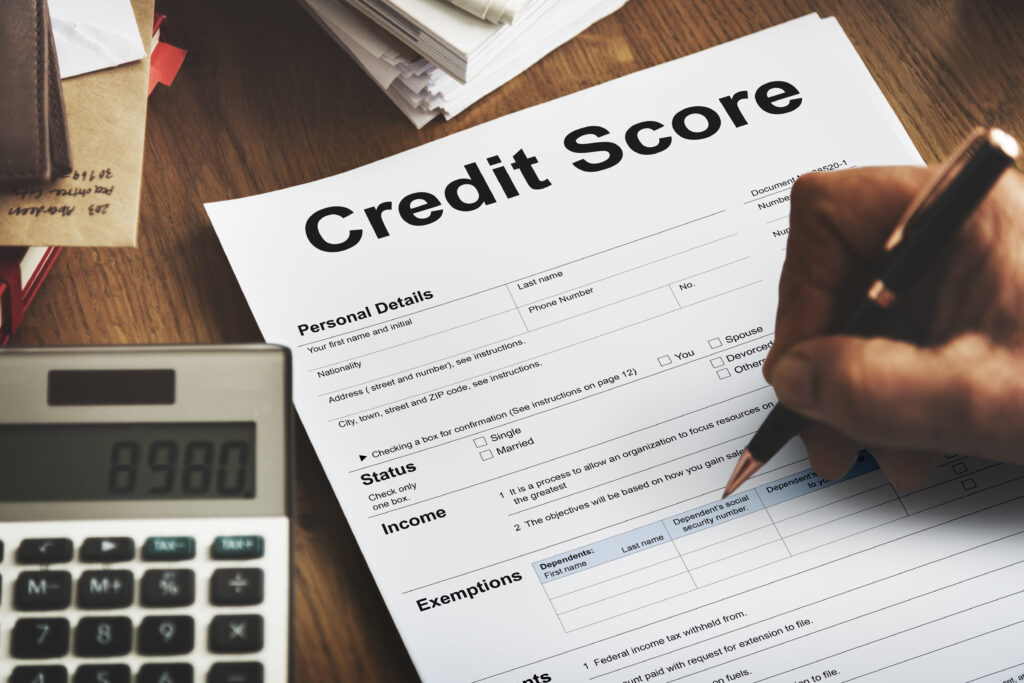In a world where debt often carries a negative connotation, mortgages stand apart as a unique breed, often categorized as “good debt.” This designation isn’t simply a label; it reflects a powerful tool that can empower individuals and families to build wealth, stability, and even achieve their dreams. By diving deeper into the characteristics of mortgages, we’ll unravel why they earn this “good debt” status and how they can pave the path to a brighter financial future.

.
Deep Dive into Financial Management & Stability and Tangible & Functional Benefits of Mortgages
Financial Management & Stability
1. Forced Savings and Financial Discipline
- Breaking the Cycle of Delayed Gratification: Analyze how the fixed monthly payments of a mortgage act as a forced savings plan, pushing individuals to prioritize long-term goals over immediate gratification.
- Automated Accumulation and Compounding Growth: Explain how setting up automatic mortgage payments ensures consistent savings and avoids procrastination, allowing wealth to accumulate more efficiently over time.
- Budgeting and Cash Flow Management: Discuss how the predictable nature of mortgage payments can aid in creating and adhering to a budget, promoting responsible financial management and improved cash flow control.
- Real-world Examples: Showcase success stories of individuals who used the discipline of mortgage payments to overcome debt, save for future goals like education or retirement, and achieve financial stability.
2. Credit Score Improvement and Future Borrowing Power
- Consistent on-time payments: Analyze how consistently making mortgage payments on time contributes significantly to a positive credit history, boosting credit scores.
- Demonstrating Financial Responsibility: Explain how mortgages showcase borrowers’ ability to handle long-term financial commitments, leading to increased trust from lenders and improved access to future loans.
- Lower Interest Rates and Cost Savings: Discuss how a good credit score gained through reliable mortgage payments can translate to lower interest rates on future loans like car loans or credit cards, saving money in the long run.
- Beyond Mortgages: Highlight how a strong credit score built through mortgage responsibility can benefit various aspects of life, such as renting apartments, securing utilities, or even obtaining favorable insurance rates.
3. Stability and Security Beyond Rent
- Protection from Rent Increases and Market Fluctuations: Discuss how owning a home provides protection from unpredictable rent increases and volatile housing markets, offering stability and predictability in monthly housing costs.
- Sense of Control and Rootedness: Explore the psychological and emotional benefits of homeownership, providing a sense of control over living conditions, fostering stability, and creating a sense of belonging in a community.
- Long-term Planning and Security: Analyze how owning a home offers a long-term investment and a secure future, especially in retirement when housing costs are no longer a burden.
- Generational Security: Discuss the potential to pass down a mortgage-free home or accumulated equity to future generations, providing them with financial security and a valuable asset.
4. Hedge against Inflation and Maintaining Purchasing Power
- Historical Trends and Evidence: Provide data and visualizations showcasing how property values historically tend to rise over time, often outpacing inflation and maintaining the purchasing power of the initial investment.
- Real Estate as a Tangible Asset: Explain how unlike other investments, like stocks or bonds, a home is a tangible asset with intrinsic value that is less susceptible to inflation erosion.
- Fixed-Rate Mortgages and Insulation from Volatility: Discuss how fixed-rate mortgages provide protection from rising interest rates and inflation, ensuring predictable monthly payments even if other costs increase.
- Alternative Strategies for Inflationary Periods: Explore creative strategies for homeowners to further leverage their property against inflation, such as renting out spare rooms or refinancing to access equity for inflation-resistant investments.
Tangible & Functional Benefits
1. Customization and Control: Your Canvas, Your Rules
- Freedom of Expression and Personalization: Discuss the unique opportunity to modify and decorate your own home, reflecting your tastes and personality, creating a personal haven.
- Renovations and Upgrades: Explore the potential for renovations and upgrades to increase the functionality and value of your home, tailoring it to your specific needs and desires.
- Investment in Happiness and Wellbeing: Analyze how freedom and control over your living space can positively impact mental and emotional wellbeing, contributing to a sense of comfort and ownership.
2. Building Equity for Future Generations
- Generational Wealth Transfer: Explain how homeownership enables wealth to be passed down through inheritance, providing future generations with a valuable asset and financial stability.
- Estate Planning Strategies: Explore various estate planning strategies for maximizing the transfer of home equity to future generations, such as creating trusts or utilizing living wills.
- Breaking the Cycle of Rent and Building a Legacy: Discuss how owning a home can break the cycle of renting and establish a lasting legacy for families, empowering future generations with financial security and opportunities.
3. Community and Social Benefits
- Sense of Belonging and Neighborhood Participation: Explore the potential involvement in homeowners’ associations or neighborhood activities, fostering a sense of community and belonging among residents.
- Building Social Capital and Support Networks: Discuss how owning a home can facilitate building social connections and support networks within the community, offering benefits like childcare assistance or shared resources.

Investment & Wealth Building
1. Homeownership as an Appreciating Asset
Historical Appreciation Trends
- Provide clear data and visualizations illustrating the historical trend of property values appreciating over time in various markets.
- Differentiate between overall national trends and specific regional or local market growth patterns.
- Analyze the impact of factors like housing type, location, and economic conditions on appreciation rates.
Compounding Effect and Wealth Growth
- Explain the concept of compound interest and how it applies to property value appreciation.
- Use clear examples to showcase how even modest annual appreciation rates can significantly increase net worth over decades.
- Compare the potential wealth growth from real estate appreciation to alternative investment options like stocks or bonds.
Hedging Against Inflation
- Discuss how rising property values can act as a hedge against inflation, maintaining the purchasing power of the initial investment.
- Provide historical examples of inflation periods and how real estate investments fared compared to other assets.
- Analyze the limitations of this hedge depending on specific inflation rates and local market conditions.
2. Leverage and Wealth Amplification
Leveraging Your Money
- Explain how mortgages allow individuals to use borrowed capital to acquire a high-value asset like a home, amplifying their purchasing power.
- Compare the potential of purchasing a home with a mortgage versus saving up the full amount over time, highlighting the accelerated access to property ownership.
Investment Multiplier
- Analyze the concept of the investment multiplier and how it applies to leveraging for real estate.
- Use concrete examples to showcase how a small down payment can lead to significant gains in net worth through property appreciation.
Risk and Reward Balance
- Acknowledge the inherent risk associated with leveraging, specifically the potential for losses if property values decline.
- Discuss strategies for mitigating risk, such as maintaining a healthy equity cushion and choosing properties in stable markets.
- Compare the risk-reward profile of leveraged real estate investment to other investment options.
3. Tax Benefits and Financial Optimization
Mortgage Interest Deductions
- Explain the concept of mortgage interest deductions and their potential tax savings for homeowners.
- Provide clear examples of how these deductions can reduce taxable income and lower overall mortgage costs.
- Discuss the eligibility requirements and limitations of mortgage interest deductions in different tax jurisdictions.
Property Tax Deductions and Strategies
Explore the potential benefits of deducting property taxes from federal or local income taxes, depending on location and tax code.
Analyze strategies for maximizing property tax deductions, such as claiming home office deductions or appealing property assessments.
Tax Planning Implications
- Discuss how understanding mortgage-related tax benefits can inform smart financial planning decisions.
- Encourage potential homeowners to consult with tax professionals for personalized advice on optimizing their mortgage and tax deductions.
4. Building Equity and Long-Term Security
Ownership Creation with Each Payment-
- Explain how every mortgage payment contributes directly to building equity in the property, increasing ownership stake over time.
- Use financial simulations to illustrate the gradual equity build-up through regular mortgage payments.
- Compare the wealth-building potential of equity accumulation to alternative saving methods like traditional savings accounts.
Financial Cushion and Security Blanket
- Discuss how accumulated equity acts as a valuable financial cushion, offering security in case of future job loss or unexpected expenses.
- Explore options for accessing equity through refinancing or home equity loans for various financial needs, such as education or business ventures.
Retirement Planning and Financial Stability
- Analyze how a paid-off mortgage can significantly improve financial stability and independence in retirement.
- Discuss the potential for downsizing or renting out a mortgage-free home to generate additional income in retirement.
- Compare the security of owning a mortgage-free home versus relying solely on pensions or social security in retirement.

Nuanced Considerations and Potential Risks: A Deeper Look
Debt Burden and Financial Strain
- Quantifying the Commitment: Analyze the average size of mortgages relative to median income in different regions, illustrating the significant financial commitment involved.
- Budgeting for Mortgage Payments: Explore real-life budgeting examples to demonstrate how mortgage payments can impact everyday expenses and necessitate responsible financial planning.
- Unexpected Expenses and Financial Vulnerability: Discuss the potential for unexpected expenses like job loss, medical bills, or home repairs to exacerbate financial strain and make mortgage payments difficult.
- Strategies for Managing Debt: Provide practical tips for managing a mortgage alongside other debts, such as debt consolidation, creating emergency funds, and utilizing financial services and resources.
Market Volatility and Risk
- Historical Market Cycles and Downturns: Analyze historical data and case studies to demonstrate the cyclical nature of real estate markets and the potential for property value depreciation.
- Negative Equity and Financial Losses: Explain the concept of negative equity, where the outstanding mortgage balance exceeds the property’s market value, and its potential financial consequences.
- Location-Specific Risks and Market Analysis: Discuss how factors like location, property type, and economic conditions can affect the risk of market downturns and negative equity.
- Strategies for Mitigating Risk: Explore options for mitigating market risk, such as choosing stable market locations, diversifying investments, and maintaining healthy equity cushions.
Maintenance and Upkeep Costs
- Hidden Costs Beyond Mortgage Payments: Analyze the ongoing expenses associated with homeownership, including property taxes, utilities, insurance, and routine maintenance.
- Unexpected Repairs and Major Renovations: Discuss the potential for large and unpredictable expenses like repair needs or major renovations, impacting budgets and financial planning.
- DIY Skills and Cost Savings: Explore the benefits of acquiring basic DIY skills for home maintenance, potentially reducing reliance on professional services and saving money.
- Financing Options for Upkeep: Analyze available financing options like home equity loans or lines of credit specifically designed to cover major maintenance or renovation costs.
Limited Mobility and Lifestyle Considerations
- Career Opportunities and Geographic Flexibility: Discuss how owning a home can limit geographic mobility and impact career advancement opportunities that require relocation.
- Lifestyle Choices and Personal Preferences: Analyze how homeownership can restrict flexibility in living arrangements, travel plans, or lifestyle choices that may prioritize mobility over rootedness.
- The Rental vs. Ownership Trade-Off: Compare the freedom and flexibility associated with renting to the stability and long-term benefits of owning a home, acknowledging individual preferences and lifestyle priorities.
- Alternative Housing Options and Flexibility: Explore alternative housing options like co-living or tiny homes that offer flexibility and affordability while still providing a sense of ownership and community.
Accessibility and Affordability Challenges
- Systemic Inequalities and Discrimination: Address the systemic inequalities in access to affordable housing and mortgages faced by specific demographics, including low-income communities, minorities, and first-time buyers.
- Predatory Lending Practices and Financial Exploitation: Warn against predatory lending practices targeting vulnerable populations with unfair terms and high-interest rates, leading to financial hardship.
- Government Programs and Support Initiatives: Explore existing government programs and support initiatives aimed at increasing housing affordability and access to fair mortgages for specific demographics.
- Financial Literacy and Education: Advocate for the importance of financial literacy education, particularly in disadvantaged communities, to empower individuals to make informed decisions about mortgages and housing options.
Overleveraging and Financial Vulnerability
- Temptation and Risk of Overborrowing: Analyze the psychological factors and societal pressures that can lead individuals to take on larger mortgages than they can afford.
- Debt-to-Income Ratio and Affordability Metrics: Explain the importance of utilizing debt-to-income ratios and other metrics to assess affordability and avoid overleveraging.
- The Debt Spiral and Financial Hardship: Discuss the consequences of overleveraging, including missed payments, foreclosure risks, and negative impacts on credit scores and future borrowing opportunities.
- Responsible Borrowing and Financial Planning: Advocate for responsible borrowing practices, encouraging individuals to seek financial advice and carefully assess their ability to comfortably manage mortgage payments before committing.
By delving deeper into these nuanced considerations and potential risks, you can create a comprehensive and balanced view of mortgage debt, empowering individuals to make informed decisions about homeownership within the context of their specific circumstances and financial goals.

Balancing the Perspective: When Mortgage Debt is Not “Good”
The “good debt” label attached to mortgages often overshadows the potential downsides involved. Recognizing these nuances is crucial for making informed decisions about homeownership. Here are some situations where mortgage debt could become detrimental:
Excessive Borrowing and Financial Instability
- Overextended Budgets and Strained Finances: Analyze the dangers of exceeding one’s affordability by taking on a mortgage too large for their income. Explore real-life examples of individuals struggling to handle hefty monthly payments, sacrificing necessities, and jeopardizing their financial stability.
- Debt Spiral and Foreclosure Risks: Discuss the domino effect of overleveraging: missed payments, late fees, accumulating interest, and potential foreclosure. Analyze statistics on foreclosure rates and their devastating consequences on credit scores, future borrowing abilities, and emotional wellbeing.
- Alternatives to Overborrowing: Explore responsible borrowing practices like pre-qualification, considering smaller loan amounts, or opting for a more affordable living arrangement like renting or co-owning with others.
Unrealistic Expectations and Market Timing
- Myth of Guaranteed Appreciation: Debunk the misconception that home prices always appreciate, providing historical data and case studies of market downturns where property values can depreciate, leading to negative equity and financial losses.
- Speculative Gambling and Financial Risks: Warn against treating homeownership solely as an investment with guaranteed returns. Analyze the speculative nature of relying on future appreciation to justify an unaffordable mortgage, highlighting the potential financial turmoil if market predictions are wrong.
- Focusing on Long-Term Stability and Growth: Encourage realistic expectations about homeownership as a long-term investment strategy rather than a quick financial windfall. Discuss the gradual wealth-building potential through equity accumulation and responsible mortgage management.
Ignoring Personal Preferences and Lifestyle Factors
- Prioritizing Ownership over Fulfillment: Warn against succumbing to societal pressures to own a home at the expense of individual preferences and lifestyle needs. Analyze the potential for dissatisfaction and missed opportunities if homeownership restricts travel, career advancement, or preferred living arrangements.
- Urban Nomads and Flexible Lifestyles: Explore alternative housing options and life choices that may not align with traditional homeownership, such as van life, co-living communities, or minimalist living in smaller spaces.
- Finding the Right Fit for Individual Priorities: Advocate for prioritizing personal fulfillment and long-term happiness alongside responsible financial planning. Encourage individuals to evaluate their lifestyle preferences and goals before committing to a mortgage to ensure it aligns with their desired life trajectory.
Alternative Investment Options and Financial Goals
- Diversification and Risk Management: Discuss the importance of diversifying investments beyond homeownership to mitigate risks and align with individual financial goals. Explore alternative investment options like stocks, bonds, mutual funds, or other assets that could be better suited for specific risk tolerance and financial objectives.
- Early Career and Future Plans: Analyze the potential advantages of delaying homeownership for individuals in their early careers, focusing on building savings, investing in education or skill development, and achieving financial stability before considering a significant mortgage debt.
- Personalized Financial Planning and Strategy: Advocate for seeking professional financial planning advice to tailor investment strategies and debt management plans to individual circumstances, goals, and risk tolerance.
Impact on Mental Health and Stress
- Anxiety and Pressure of Debt: Acknowledge the significant stress and anxiety associated with managing a large mortgage, potentially impacting mental health and overall well-being. Discuss the pressure to maintain payments, the fear of financial instability, and the emotional toll of potential foreclosure.
- Financial Education and Stress Management: Advocate for financial literacy education to empower individuals with knowledge and skills for managing debt effectively. Explore stress management techniques and self-care practices for those coping with the burdens of significant mortgage debt.
- Prioritizing Mental and Emotional Health: Encourage individuals to prioritize their mental and emotional well-being alongside financial goals. Remind them that financial security should not come at the expense of mental health and personal happiness.
Ethical Considerations and Predatory Lending Practices
- Targeting Vulnerable Populations: Discuss the unethical practices of predatory lenders targeting vulnerable populations like low-income communities, minorities, or first-time buyers with unfair terms, high-interest rates, and hidden fees, leading to financial exploitation and increased risk of foreclosure.
- Consumer Protection and Responsible Lending: Advocate for strengthening consumer protection laws and regulations to curb predatory lending practices and ensure fair access to affordable mortgages for all.
- Financial Literacy and Empowerment: Empower individuals with knowledge about mortgages and lending practices to identify predatory tactics and protect themselves from exploitation.
Conclusion
Throughout this exploration, we have peeled back the layers of the “good debt” label often attached to mortgages. We’ve examined the undeniable benefits of homeownership as a potential path to wealth building, financial stability, and personalized living space. We’ve also delved into the crucial counterpoints, acknowledging the risks of overleveraging, unrealistic expectations, and potential conflicts with individual priorities and lifestyle choices.



